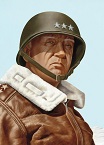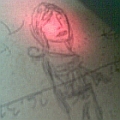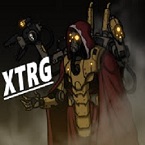el cid again
Posts: 16922
Joined: 10/10/2005
Status: offline

|
RHS Orders of Battle Development & Economic Development
RHS was born in the days of War in the Pacific (pre Admiral’s Edition) as a limited effort, headed by future AE chief programmer Joe Wilkerson, to define aircraft data in a systematic way, the hope that would yield better combat outcomes. Joe is a mathematician by training, and he defined both how the data should be obtained and defined the sorts of factors that needed to be used to calculate values such as “durability” and “maneuverability.” Briefly accepted for the CHS mod “coordinator” Andrew Brown, internal mod politics permitted a “plank holder” to reject anything. One of these, complaining I had got rid of his “long range Pete” (and nothing else specific), rejected the work. But Andrew believed it was a sufficient improvement he suggested we put the data into its own mod. Disliking the politics of CHS, the RHS team decided to open RHS to ideas from the forums. Roughly have of what is in RHS came from the forums. And even those aircraft data formulas were developed openly, on the forums, and modified many times to improve the realism of the air model. The “RHS philosophy” – explicitly defined in the pre-AE RHS Manual – was that “anything better than what we have is in.” No matter how much effort was put in, we would throw out what we had in favor of even a slight improvement.
Over time, every nation was extensively redeveloped (not to mention several nations were added). Not only did major powers grow in unit counts by 25-50%, virtually all existing units were reviewed for technical improvements. Orders of battle vastly increased in detail. As squad counts and unit counts grew, the logistic demands they make operationally grew exponentially. As well, because Mifune did the “long term verification tests” on the economy for AE, we knew these only ran out six months. It was easy to determine that 1941 supply could never feed 1944 operational requirements. A suggestion from the forums was to build in ways to grow the supply over time. [It appears one stock solution was to send in “convoys” this massive numbers of supply points and fuel points. These work, but only very locally and very briefly.] Taking our clue from the AE Manual – which declares that the economy is “an accurate simulation” – we came up with the idea of doing with locations what we did with air units, naval units and land units: perform a microeconomic analysis of every actual (or missing) named hex on the map. This took years of research. It required defining the meaning of “port build” and “airfield build” in a way that could relate to actual data. But the effort yielded great dividends: many bases that were built from nothing during the war were found and added; many truly major cities that were missing from stock were added; many significant local industries were added – some of them of historical significance about which there is astonishing ignorance in the Western world. At the same time, an experience with a very anti-British Irish nationalist who loved kicking the Allies right off the Western and Southern map edges, caused us to look at areas substantially neglected – in spite of their historical military or economic assets. It was also our (Mifune and I in particular) that adding locations, and units, must benefit the Allies generally. More local supply, more places one can build fortifications, airfields and ports, and more forces that don’t have to be sent from the USA, the UK, etc. While that turned out to be untrue, we make no apology. It turns out that the data is deceptive (Tracker fans beware). Total supply (or resources, or oil, or fuel) in a region is not what matters. Movement of supply (etc.) is not very automated and not on a sufficient scale even when road and railroads exist, or when adjacent ports are Level 3 or above. Far more important than having “more than you need” in a region is having above the minimum you need at each point in that region. Achieving that is far more difficult than we expected it to be. Achieving that generally requires using shipping well: “AKs to burn” do not exist in RHS, even though there are vast numbers of cargo vessels. In particular, it is easy to take an major force somewhere and be unable to feed it – so one loses the campaign.
Page 2
We have found that some RHS concepts – such as the evolution of road and rail infrastructure over time – greatly mitigate the problems of semi-automatic distribution of supply (etc.) as the war progresses. In the big picture sense, it does not really matter which side builds or exploits this infrastructure – both sides did it. In much of the region, the airfield dates from WW2, and it may have been built by either side, or even by both sides. As well, some places not developed might have been. Where this is known to be the case, the more important such locations are also included as undeveloped, but potentially developable dot locations. Depending on the strategy of players in a given game, the significance of a location will vary. RHS tries to present all the options for infrastructure and economic development. Although that is impossible, it was able to include a surprising amount of this.
Order of battle data is as spotty as the information on each hex was. Many hexes had the wrong terrain type, the wrong hex-side, the wrong (or more often zero) industry, the wrong road and rail net. Orders of battle omitted many units, and many elements in the units that were included. No one looked up what LST actually entered PTO, when or where, or in what form? We added vast numbers, and deleted many which never were in the theater at all because some forum member provided us with the data (to which we added material in the Dictionary of American Fighting Ships). Stock provides LSTs as “flavor” but without attention to detail – RHS gives you the vessel when and where it entered the theater, and in what form – or removes them when they never entered the theater at all. As you progress up to larger ships and units, the more work was done. Which is not to say all the eratta has been found: we find more every day. But we always correct errors when reported so that, over time, the data gets better and better.
Disclaimer: RHS CAN fix data issues as such. It can not fix code issues. That WITP and WITP/AE have a poor land combat model is beyond our remedy. We CAN mitigate the effects of air power with too much impact. We created different bombs when on ground attack missions These are dropped in groups because “each hit is essentially one squad or device disabled or killed” (Joe Wilkerson). It also helps to add missing squads – more squads makes it harder to wipe out a ground unit. In particular, we added logistic squads, in pairs. “Transportation squads” (bearers, pack mule strings, horse or mule drawn carts or wagons, trucks) were added with an equal number of support (or motorized support) squads – so they are support neutral. These are almost unarmed squads too – a bold action rifle or so per squad. But they do increase squad count which affects combat algorithms. But more important, the logistic fingerprint is now “right” for every unit: some units have no transport at all – these are static of course; the smallest units of any given kind are also the most powerful (motorized units can tow big artillery pieces). The largest units are “pack” – their animal drawn transport units require more lift and “more food” (supply points). But paradoxically, they have the smallest artillery – so less firepower than motorized units do.
A special case is airborne units. A variety of different kinds is included. The Allies ultimately field more of them in more robust forms, but the Japanese have a few when it matters most – at the start of the war. RHS has perhaps spent too much time (and too many slots) related to this – because WW2 offers a great variety of different versions. Some units were formed but not used, or misused as heavy infantry (which they are not). Some units are both air and ground units – an idea that still exists – where the PLAAF “owns” the “Airborne Corps” (renamed in 2017), and has organic transport aircraft. In WW2, Germany advocated this organization, but did not itself adopt it. IJN took the training, but ignored the advice on combined units. IJA, however, did create what was ultimately a de facto airborne brigade with organic transport and glider organizations. IJN trained three airborne SNLF’s – but only used two of them for airborne operations – and never did try to form larger than battalion formations, nor any with aircraft. IJA ultimately formed the Raiding Group. This consisted of two Raiding Forces, two Glider Forces, an airborne Engineer Unit, an airborne Tank Unit, and an airborne Machine Cannon Unit. [A force is a baby regiment of two battalions. A Raiding force is pure light infantry. A Glider Force is sort of medium weight infantry with heavy weapons, but not as much as first line, ground heavy infantry has.] But the entire Group – if one waits until all its elements are available and combines it up – can fly as a single, lightweight fighting team. And substantially using Raiding Regiments of Army transport planes, and Glider Regiments using Army gliders. [In Japan enhanced scenarios, we do not take the time to develop gliders, and so the Raiding Group consists of four Raiding Forces and no Gilder Forces. It is available somewhat sooner, but is a much lighter and less powerful unit.] Note that most Japanese airborne operations are never reported because they were not opposed landings, and so, are not technically combat drops. Japan occupied most of the Eastern NEI in this way, with tiny packets of troops landing to take over a district headquarters. Leaving local police in place (which was their norm), they just said “we are in charge now.” And beheaded any who objected. Contrast this with the peculiar form of the Indian Army 44th Division (airmobile??). It has para units, glider units, and a “support brigade” – which if it combines up with the other brigades PREVENTS them from ever performing an airborne operation again! But it is the only partly air droppable unit that has a chance in sustained combat against enemy heavy forces. In between we have US and British airborne divisions, and Soviet Parachute Brigades. Each has its actual internal order of battle, and each represents a very different school of thinking about air droppable ground combat units. Because we cannot know what will happen in a game “universe” – we present the fully developed units as assets for players to try to use – if they are so inclined. That most of them were not used fully as intended is not a reason not to let players use them if they want to try. The main difference between Axis and Allied airborne units is that Allied ones are generally available later in the war, are generally much better outfitted with heavy weapons, and are supported by larger numbers of air transport and glider units. [RHS gliders are always “combinations” of a “tug” and one or two gliders. They carry more than an air transport can, over less range, with less speed and maneuverability. In PTO, British and Indian forces use the same glider as the US does.] Just because Japan has all the fun (if it wants to) with airborne in 1941, the Allies have much more robust options eventually. By that time, they probably control the sky well enough the Japanese won’t be able to use their airborne. [Japanese gliders WERE used – but for rear area logistical support – notably between Formosa and Luzon in a way submarines could not torpedo. Not in combat operations. Which would be suicide for such cumbersome “combinations” by the time they existed. Due to fighter opposition.
Japanese armor is unique. Since IJA was not organized to support motorized units, and most Japanese could not drive, they had to train their own crews and provide “rear area” support at the front. It also was designed for use on the roads and bridges of Asia of the time. Japanese tanks were quite successful, as was the US built Start – because they did not overwhelm the roads and bridges of the area. The anomaly of the battle in 1944 between a Japanese and a US tank division is very misleading – the Japanese had pre-war tanks, not their newer ones. The US just stood off and attacked out of range of the Japanese low velocity guns! See RHS Scenario 125 Tank Logic for more detail JES Scenarios 125 and 129 fully implement General Yamashita’s 1941 recommendations.
< Message edited by el cid again -- 6/8/2018 4:48:02 AM >
|
 Printable Version
Printable Version













 New Messages
New Messages No New Messages
No New Messages Hot Topic w/ New Messages
Hot Topic w/ New Messages Hot Topic w/o New Messages
Hot Topic w/o New Messages Locked w/ New Messages
Locked w/ New Messages Locked w/o New Messages
Locked w/o New Messages Post New Thread
Post New Thread